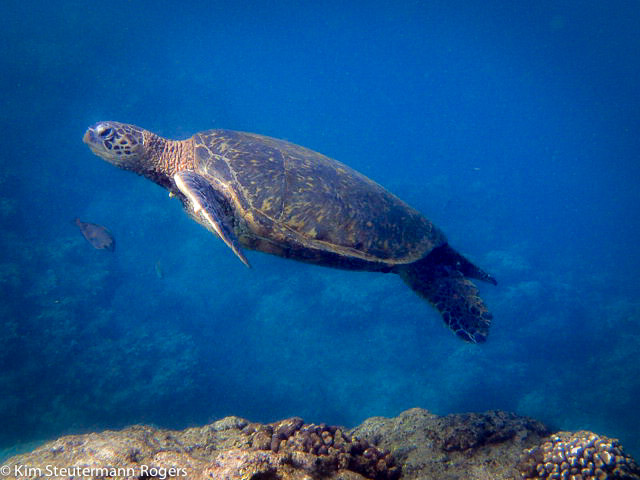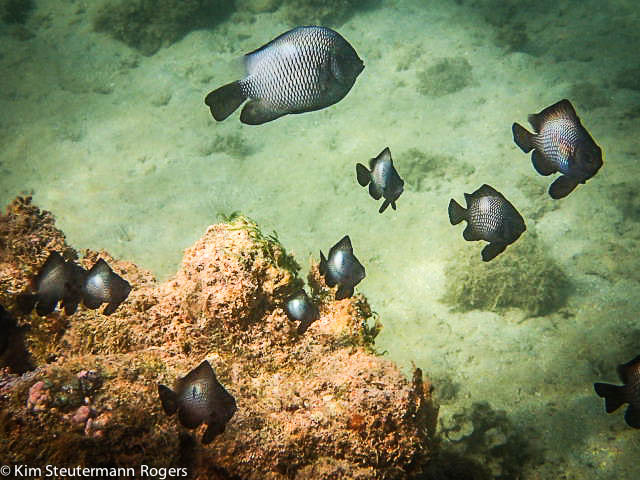Yesterday was World Wildlife Day. I celebrated by going SCUBA diving with my best friend who is visiting from frigid Detroit.
A bit about World Wildlife Day: It’s one of the newest “world days” around, proclaimed as such on December 20, 2013 by the United Nations General Assembly. The intent behind the day is to celebrate the variety of wild flora and fauna and raise awareness of the illegal trade of wildlife across the globe.

A bit about my BFF: Her name is Tommye. People told me I reminded them of her long before we met. I really didn’t believe them. I had yet to meet anyone who thought the same strange thoughts I did, the kind I usually kept to myself because they veered from the everyday grain of others. Like when, for some strange reason I cannot recall, we went to greet President Clinton at the old Kansas City Airport one year. We stood slightly apart from the throngs of people pushing against the security fence as his entourage of helicopters landed one after the other. Instead of rushing forward, arms outstretched, hoping for a handshake, we both stood stock still—mouths agape, I’m sure—gazing as the last helicopter landed. Then, we turned to each other and at the same time said, “I want to fly that.”
And we aren’t even pilots.
There are only two people about whom I remember first laying eyes on—my husband. And Tommye. When we finally did meet, it was in the offices of a small ad agency in Kansas City that overlooked the Country Club Plaza. That was 30 years ago. We’ve been best friends ever since. Tommye was in my wedding; I was at the birth of her first grandchild. And we’ve shared many experiences in between—often high-fiving, and fist-pumping, and shouting in amazement while others—husbands included—look on, shaking their heads in embarrassment.
Since she’s been on Kauai, in four short days, I’ve taken Tommye to count humpback whales blowing, breaching, slapping and diving. We’ve surveyed Laysan albatross chicks, their parents, and juveniles performing courtship dances. And we’ve gone diving–me to survey reef fish and she to get her SCUBA certification. So, there has been an abundance of excitement and exclaiming, “Look. Look.”
Tommye’s very first underwater wildlife encounter involved a green sea turtle. “It came right up to us on our descent line,” she said after her first boat dive. “It was huge.”
It takes a bit of skill to scream while holding a regulator in your mouth, but I’m sure Tommye mastered that skill long before neutral buoyancy and mask-clearing.
It’s often the mega-fauna that get our attention—under water and above. In the United States today, Green sea turtles are protected by the Endangered Species Act; whereas, 50 years ago, you’d find turtles listed on many restaurant menus around the Hawaiian Islands under the heading of soup.

Yesterday, on her third checkout dive, I got to join Tommye, and, yes, we saw turtles. They are making an amazing comeback after near extinction. But, thanks to our dive master KC, we took more interest in smaller species—the common ones you’re likely to encounter while diving and snorkeling around Hawaii.
Take the Hawaiian dascyllus, a greyish damselfish that grows to five inches. It chirps when chasing off other species, but it makes a popping noise towards their own species, suggesting they can distinguish themselves from others.

The Hawaiian cleaner wrasse grows to three-and-a-half inches, its body elongated and its snout pointy. As an adult, it has purple, black and yellow colors. Unlike other wrasses that burrow into the sand at night, this species usually creates a mucous cocoon around itself like a sleeping bag. As its name implies, the cleaner wrasse spends its days ridding other marine organisms—like turtles and fish much larger than themselves, including grouper and moray eels—of parasites on their bodies, in their gills, and, even, inside their mouths. Their services are so appreciated by these other fish that the hosts will line up the way automobiiles do at car washes.
Then, there is the lemon-colored Yellow tang. It can grow to nearly eight inches and live to be an amazing 40 years old. The Yellow tang’s color is so bright and they were once so abundant that I’ve heard the western shore of Big Island was called the Gold Coast, because all you could see was their flashing yellow fins as your plane made its approach for landing.
But that changed when the unregulated aquarium trade started scooping up Yellow tangs, far and away the most popular species in the aquarium business. In 2006, an estimated 354,000 Yellow tang were caught off Big Island. Thankfully, after the state legislature banned fish collecting along 35 percent of Big Island’s coastline in the 1990s, scientific surveys show a significant rebound in Yellow tang fish populations in protected areas and beyond.
On World Wildlife Day, that’s something to shout about.
Not all wildlife encounters allow for exuberant displays of amazement—at least, not the verbal kind. When Tommye helped me identify leg bands on Laysan albatross at a colony along the North Shore of Kauai, she looked up to see a humpback whale breach.
Now, this is the kind of thing that gets Tommye excited. Normally, she would jump up and down and yell. But with Laysan albatross feeding chicks nearby, she had to resort to other methods to share her wonder and awe. The last thing we wanted would have been to scare off a parent before emptying its belly of food.
I was thirty feet away, head down.
So, instead of screaming to get my attention, Tommye texted: I just saw a huge breach!!!!!

Lovely tribute to friendship. 🙂
LikeLike
Thanks, Pam.
LikeLike
YOU ROCK!
LikeLike